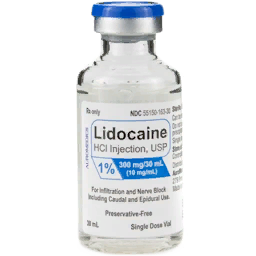Lidocaine
| Lidocaine | |||||||||||||
|---|---|---|---|---|---|---|---|---|---|---|---|---|---|

|
|||||||||||||
| Item | |||||||||||||
|
|||||||||||||
| Vial | |||||||||||||
| Vial Size | 5ml | ||||||||||||
| Vial Contents | 100mg | ||||||||||||
| Vial Concentration | 20mg/ml | ||||||||||||
| Medication | |||||||||||||
| Route(s) of administration | IV/IM | ||||||||||||
| Dose Range | (IV) 1mg/kg (IM) 50-100mg |
||||||||||||
| Medication Effects | |||||||||||||
|
|||||||||||||
| Technical | |||||||||||||
|
|||||||||||||
Lidocaine, is a medication used as a local anesthetic and for treatment of shockable cardiac arrest.
Function
Lidocaine is used as a local anesthetic to prevent pain from certain medical procedures, and to treat shockable cardiac arrest.
Lidocaine can be administered intravenously or intramuscularly, depending on the desired effect, with a fast onset, short peak and duration.
Intravenously administered lidocaine will slow the heart rate and improve Return of Spontaneous Circulation from shockable cardiac arrest rhythms.
Intramuscularly administered lidocaine will act as a local anesthetic at the injection location.
Usage
The Use Syringe action is available on the Torso and Limbs in the
![]() Medication
Tab
Medication
Tab
The Push Lidocaine action is available on the Torso and Limbs in the
![]() Medication
Tab
Medication
Tab
The Inject Lidocaine action is available on the Torso and Limbs in the
![]() Medication
Tab
Medication
Tab
Medications require a ![]() Syringe to be able to be drawn and administered.
Syringe to be able to be drawn and administered.
IV access is achieved with IV Catheters or IO devices.
Medications can be administered intramuscularly with just a syringe.
Dosing
Cardiac Arrest: Push 1mg/kg IV, up to 3mg/kg
Local Anesthetic: Inject 50-100mg IM
Effects
- Heart Rate: - -
- Blood Pressure: - -
- Respiration Rate: N/A
Potential Complications
- Bradycardia
- Hypotension
- Cardiac Arrest
Indications
- Shockable Cardiac Arrest (PVT/VF)
- In Advance Of Pain Procedure
Contraindications
- N/A
 ACM Wiki
ACM Wiki
